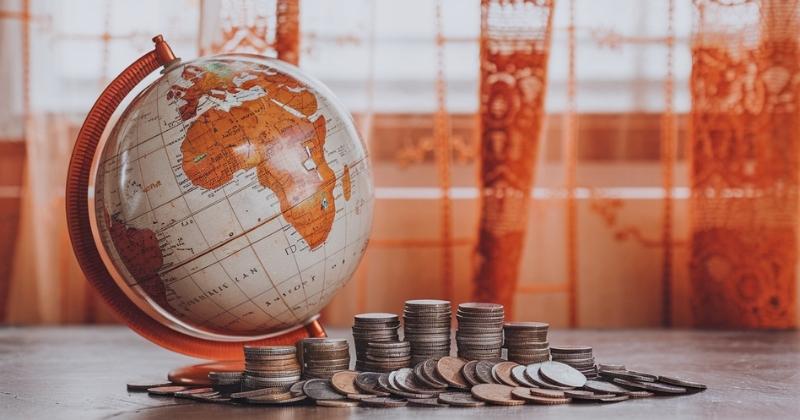
Africa possesses an abundance of natural resources, yet it is often characterised by economic challenges, particularly in the wake of the COVID-19 pandemic, internal conflicts across various nations, and global supply chain disruptions. Despite this prevailing perception, several African economies continue to demonstrate resilience. For those curious about which African nations maintain economic strength despite these difficulties, here are the ten most robust economies in a continent comprising 57 countries.
Key Takeaways
- Strongest African Currencies Are Regionally Stable but Globally Limited: While currencies like the Tunisian Dinar, Libyan Dinar, and Moroccan Dirham rank among the strongest in Africa, their influence remains limited internationally due to restricted convertibility and lower demand in global trade.
- Economic Policies and Natural Resources Shape Currency Strength: Countries with low inflation, strong monetary policies, and trade surpluses maintain more stable currencies, while those heavily reliant on commodity exports (e.g., oil, copper) face volatility due to price fluctuations.
- African Currencies Struggle for Global Influence: Despite their regional strength, African currencies lack dominance in global markets due to low foreign reserves, capital controls, and economic instability, making the US Dollar, Euro, and British Pound the preferred choices for international trade and investment.
About Arcadia Finance
Get your loan easily with Arcadia Finance—no application fees, just seamless access to 19 trusted lenders regulated by South Africa’s National Credit Regulator. Enjoy a hassle-free process tailored to your financial needs.
Factors That Influence Currency Strength in Africa
A currency’s strength depends on inflation, interest rates, foreign exchange reserves, trade balances, natural resource exports, and government policies. Countries with low inflation, strong central banks, and trade surpluses tend to have stable currencies, while those with high inflation, weak reserves, and political instability face depreciation.
Inflation and Interest Rates
Low inflation preserves currency value, while high inflation erodes purchasing power. Countries like Tunisia and Morocco maintain stable currencies through tight monetary policies. Higher interest rates attract foreign investment, strengthening a currency, while lower rates can weaken it. The South African Reserve Bank’s inflation-targeting strategy helps stabilise the rand.
Foreign Exchange Reserves and Trade Balance
Nations with high reserves (e.g., Libya and Botswana) can defend their currencies against volatility. Trade surpluses boost currency strength, while deficits weaken it. Resource-rich nations like Zambia and Nigeria benefit when commodity prices rise, but over-reliance on exports creates vulnerability to market fluctuations.
Natural Resources and Economic Stability
Countries dependent on oil, gold, or copper exports see currency gains when global demand is high but face depreciation during price drops. Diversifying economies beyond commodities is key to long-term stability.
Monetary Policy and Governance
Strong central banks and prudent fiscal policies ensure stable currencies. Botswana and Morocco maintain strong currencies through sound governance, while political instability and debt weaken others. Well-managed economies attract investment and reduce inflationary pressures.
The financial strength of a country often ties back to its history. Many nations featured in the Top 10 Oldest African Countries list have seen their currencies rise and fall due to colonial rule, trade, and modern policies, influencing Africa’s economic powerhouses today.

The Top 10 Strongest Currencies in Africa
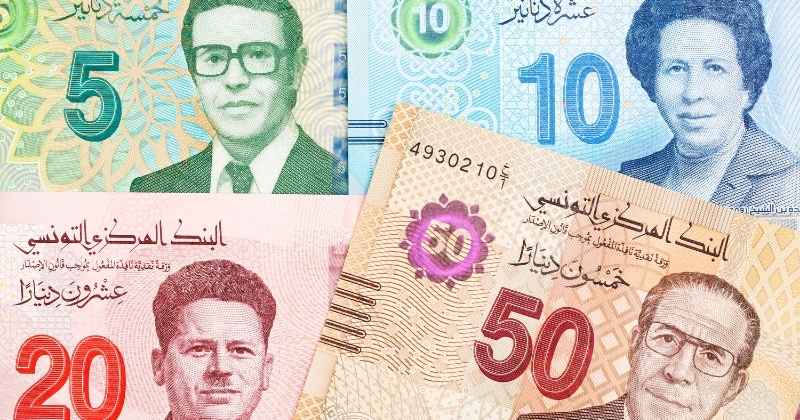
Tunisian Dinar
The Tunisian Dinar (TND) serves as the official currency of Tunisia, a North African nation situated along the Mediterranean coastline. It was officially introduced on 1 November 1958, replacing the Tunisian Franc at an exchange rate of 1,000 francs per dinar. This transition was a key step in Tunisia’s pursuit of economic and political sovereignty following the end of French colonial rule. The Tunisian Dinar is currently recognised as the strongest currency in Africa and consistently ranks among the most stable on the continent. With an inflation rate of 5.6%, it demonstrates relatively low volatility compared to other African currencies. As of the latest exchange rate, 1 US dollar is equivalent to 3.11 Tunisian Dinars, further reinforcing its position as one of the best-performing currencies globally.
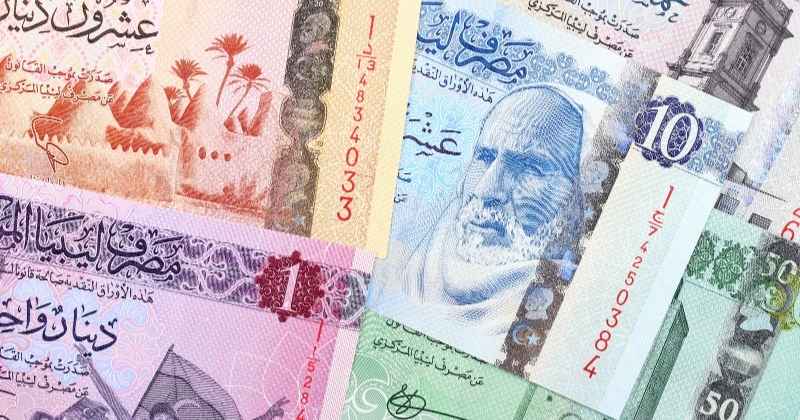
Libyan Dinar
The Libyan Dinar (LYD) serves as the official currency of Libya, a North African nation. Introduced in 1971, it replaced the Libyan Pound at an exchange rate of 1 Dinar for 10 Pounds. The currency remains one of the strongest in Africa, with relatively low volatility compared to other regional currencies. As of the current exchange rate, 1 US Dollar is equivalent to 4.81 Libyan Dinars. Libya’s inflation rate stands at 7.47%, influencing the purchasing power and economic stability of the currency.
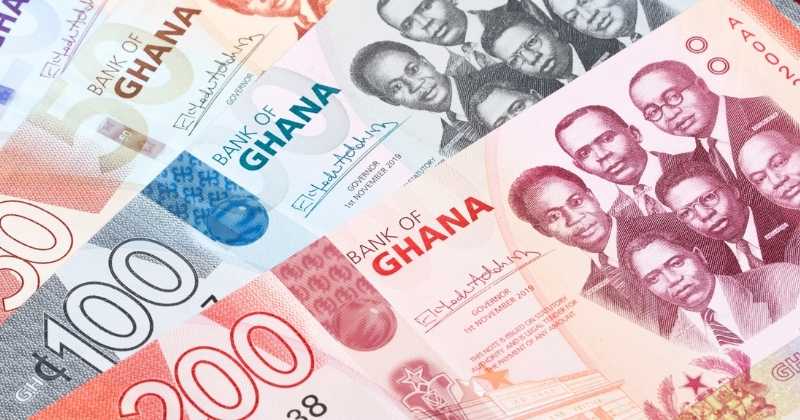
Ghanaian Cedi
The Ghanaian Cedi (GHS) is the official currency of Ghana, a country in West Africa. Originally introduced in 1965, it replaced the Ghanaian Pound at a conversion rate of 2.4 Cedis per Pound. A currency overhaul took place in 2007, with the Ghanaian Cedi (GHS) introduced to supersede the previous Ghanaian Cedi (GHC) at a conversion rate of 1 GHS to 10,000 GHC.
Despite economic fluctuations, the Ghanaian Cedi remains one of the strongest currencies in Africa, with the current exchange rate standing at 1 US Dollar to 12.08 Ghanaian Cedis, equating to approximately $0.080391 per Cedi.
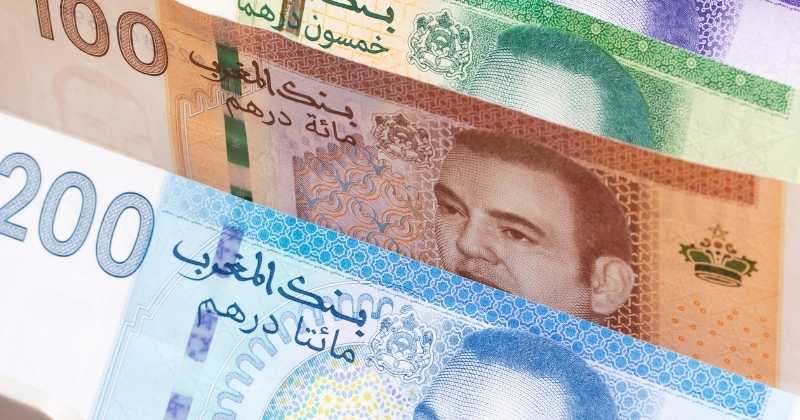
Moroccan Dirham
The Moroccan Dirham (MAD) serves as the official currency of Morocco, a nation situated in North Africa. The Dirham was reinstated as the country’s primary currency in 1960, replacing the Moroccan Franc. Since 2011, following the ascension of King Mohammed VI, Morocco has experienced substantial economic growth, largely attributed to the implementation of free-market reforms. These measures have contributed to increased financial stability, strengthening the Dirham’s position within the regional economy. The current exchange rate stands at $1 = DH 9.93.
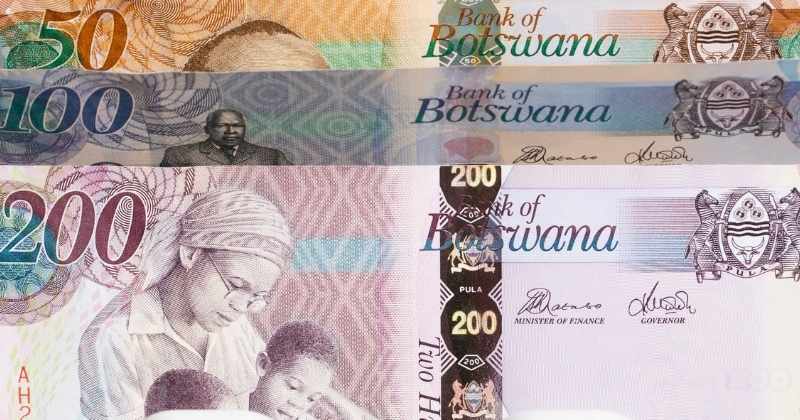
Botswana Pula
The Botswana Pula (BWP) functions as the recognised currency of Botswana, a landlocked country located in Southern Africa. Officially adopted in 1976, the Pula replaced the South African Rand as the country’s primary medium of exchange. Botswana’s currency is regarded as one of the most stable in Africa, reflecting the nation’s strong economic policies and governance. However, it remains linked to the South African Rand, which influences its valuation. The current exchange rate is $1 = 13.65P.
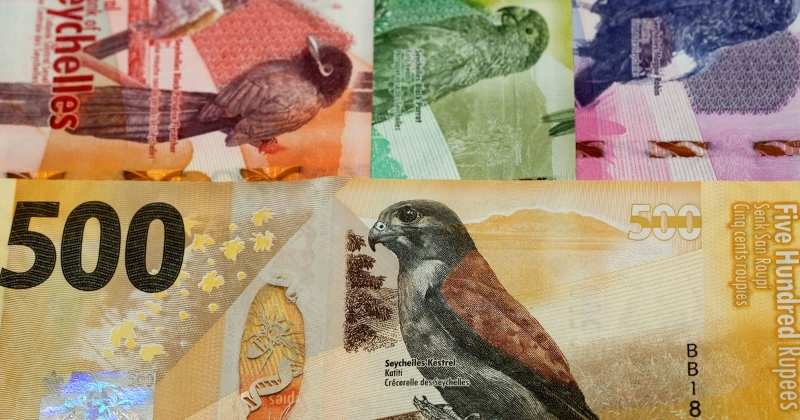
Seychellois Rupee
The Seychellois Rupee (SCR) serves as the official currency of Seychelles, a nation comprising 115 islands situated in the Indian Ocean, off the east coast of Africa. The exchange rate currently stands at 1 US dollar to 13.65 Seychellois Rupees. Seychelles operates a small, open economy, with its primary sources of revenue stemming from the tourism and fishing industries. In terms of value, the Seychellois Rupee ranks among the strongest currencies in Africa.
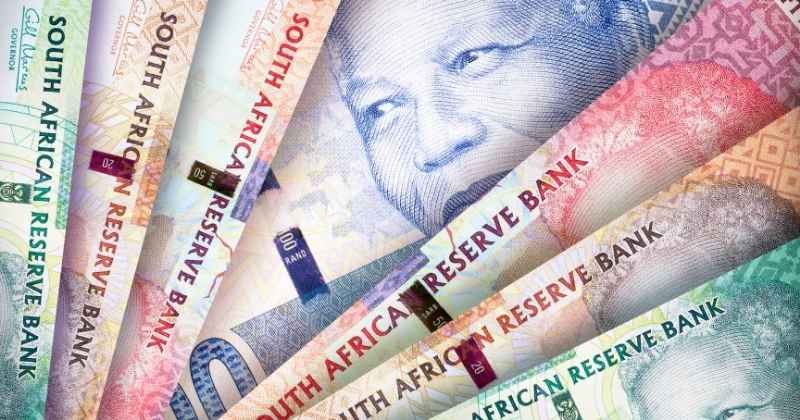
South African Rand
The South African Rand (ZAR) serves as the official currency of South Africa, a nation situated at the southernmost part of the African continent. Recognised as one of the strongest currencies in Africa, the Rand’s relative strength is largely attributed to South Africa’s economic growth. The country boasts one of the largest and most developed economies on the continent, supported by a gross domestic product (GDP) growth rate of 4.6% per year. At present, the exchange rate stands at 1 US dollar to 19.07 South African Rand.
Currency strength isn’t just a number—it shapes economies and attracts foreign investors. While a strong currency boosts purchasing power, a weaker one can be a golden ticket for investors. Discover how investors gain from weak Rand and why some opt to pour money into nations where exchange rates are shifting.
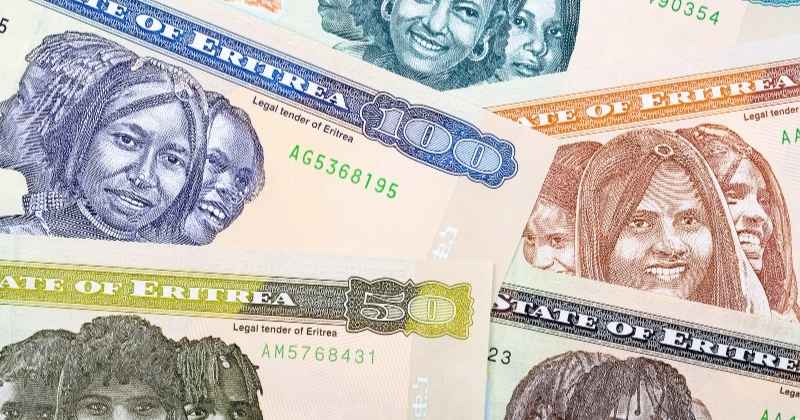
The Eritrean Nakfa
Serving as Eritrea’s Legal Monetary Unit, the Nakfa (ERN) Represents the Country’s Official Currency, a nation situated in the Horn of Africa, sharing borders with Sudan, Ethiopia, and Djibouti. Introduced in 1997, the Nakfa replaced the Ethiopian Birr, which had previously been in circulation during Eritrea’s time as a province of Ethiopia. The currency operates under a fixed exchange rate, with $1 equating to Nfk 15.00, making it one of the strongest currencies on the African continent. Additionally, the Nakfa is recognised as one of Africa’s most liquid financial assets, and it can be utilised for international transactions across the globe
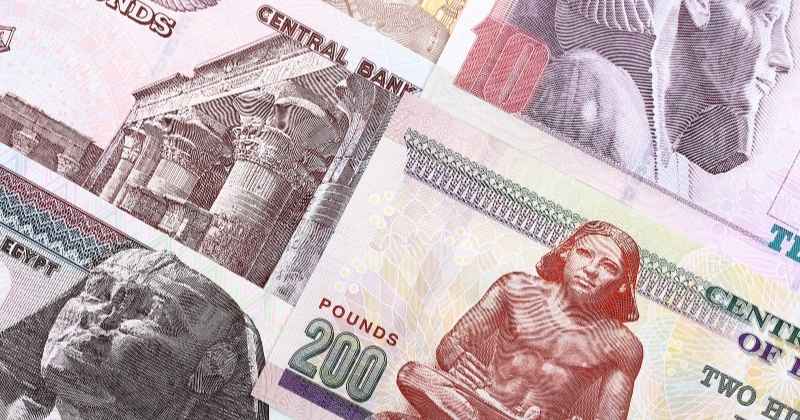
Egyptian Pound
The Egyptian Pound (EGP) serves as the official currency of Egypt and is currently exchanged at a rate of $1 = E£ 30.66. First introduced in 1834, the currency replaced the piastre as the nation’s primary unit of money. Egypt’s economy is among the oldest in the world and has undergone significant fluctuations in recent years. Following a period of political instability that severely impacted economic growth, the country has experienced a notable recovery. Inflation, which once exceeded 30%, has been effectively controlled and reduced to below 10%, contributing to a more stable financial environment.
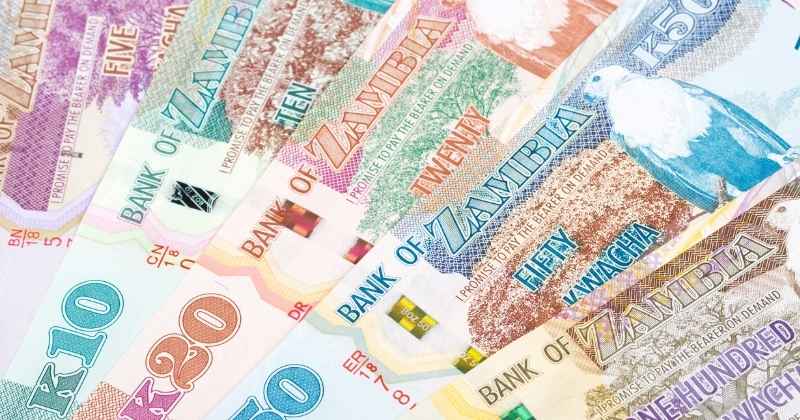
Zambian Kwacha
The Zambian kwacha (ZMW) serves as the official currency of Zambia, having replaced the Zambian pound in 1968. Its name, “kwacha,” is derived from the Nyanja language and translates to “dawn”, symbolising a new era for the country’s economy. Zambia possesses significant mineral wealth, with copper being its most valuable resource. As the largest copper producer in Africa, Zambia benefits from substantial mining operations that contribute to the strength of its currency. The exchange rate currently stands at $1 = ZK 26.39, reflecting the kwacha’s position in the global market.
A strong currency often reflects a robust banking system, where financial institutions play a key role in stabilizing the economy. A recent survey on South Africa’s top banks highlights how secure and well-regulated financial institutions attract foreign investors, further strengthening the national currency.

How These Currencies Compare Globally
African currencies, while strong within the continent, remain less dominant on the global stage. Compared to major international currencies like the US Dollar (USD), Euro (EUR), British Pound (GBP), and Swiss Franc (CHF), even Africa’s strongest currencies have lower global acceptance, limited convertibility, and reduced influence in international trade. The table below compares Africa’s strongest currencies with leading global currencies based on exchange rates, stability, and international influence.
Comparison of African Currencies vs. Global Currencies
| Currency | Country/Region | Exchange Rate (per 1 USD) | Stability | Global Influence |
|---|---|---|---|---|
| Tunisian Dinar (TND) | Tunisia | 3.11 | Stable | Limited – Not widely used outside Tunisia |
| Libyan Dinar (LYD) | Libya | 4.81 | Relatively Stable | Limited – Restricted capital controls |
| Moroccan Dirham (MAD) | Morocco | 9.93 | Stable | Moderate – Used in regional trade |
| Botswana Pula (BWP) | Botswana | 13.65 | Stable | Limited – Mostly used within Botswana |
| South African Rand (ZAR) | South Africa | 19.07 | Moderate Volatility | Moderate – Traded internationally but less influential |
| Egyptian Pound (EGP) | Egypt | 30.66 | Moderate Volatility | Limited – Used in tourism but not a reserve currency |
| US Dollar (USD) | United States | 1.00 | Highly Stable | Dominant – Global reserve currency, widely used in trade |
| Euro (EUR) | European Union | 0.92 | Highly Stable | Major Trade Currency – Used in global transactions |
| British Pound (GBP) | United Kingdom | 0.79 | Highly Stable | Widely Used – Strong presence in global finance |
| Swiss Franc (CHF) | Switzerland | 0.88 | Highly Stable | Safe-Haven Currency – Strong during economic downturns |
Why African Currencies Are Less Dominant Globally
Despite their relative strength within Africa, these currencies lack global influence due to several key factors:
- Limited International Demand: The US Dollar, Euro, and British Pound dominate international trade, while African currencies are primarily used in domestic or regional transactions.
- Restricted Convertibility: Many African currencies have capital controls or restrictions, limiting their use outside their respective countries.
- Economic Volatility: African economies often face inflation, external debt, and commodity price fluctuations, leading to weaker investor confidence in their currencies.
- Lower Foreign Exchange Reserves: Nations with high reserves (e.g., Switzerland, the US) can stabilise their currencies, whereas many African countries struggle to maintain large reserves.
- Global Perception and Stability: African currencies are generally perceived as riskier due to political instability, whereas global reserve currencies are seen as safe havens.
Conclusion
Africa’s strongest currencies reflect the economic resilience and monetary policies of their respective nations. While some, like the Tunisian Dinar and Libyan Dinar, demonstrate regional stability, they lack the global influence of reserve currencies such as the US Dollar, Euro, and British Pound. Key factors shaping currency strength include inflation control, trade balances, foreign reserves, and natural resource exports. However, limited international demand, capital controls, and economic volatility prevent these currencies from playing a larger role in global markets. Strengthening economic policies, diversifying exports, and increasing foreign investment could enhance their global standing in the future.
Frequently Asked Questions
The Tunisian Dinar (TND) is currently the strongest currency in Africa, with an exchange rate of $1 = 3.11 TND.
African currencies face limited international demand, restricted convertibility, and economic volatility, making global traders prefer US Dollars, Euros, or British Pounds for transactions.
Countries rich in oil, gold, and copper benefit when commodity prices are high, strengthening their currencies. However, over-reliance on exports can cause instability when prices fall.
The Moroccan Dirham (MAD) and Botswana Pula (BWP) are considered among the most stable due to prudent monetary policies and diversified economies.
To gain global influence, African currencies need higher foreign exchange reserves, more international trade agreements, and reduced economic volatility, making them more attractive for global transactions.
Fast, uncomplicated, and trustworthy loan comparisons
At Arcadia Finance, you can compare loan offers from multiple lenders with no obligation and free of charge. Get a clear overview of your options and choose the best deal for you.
Fill out our form today to easily compare interest rates from 16 banks and find the right loan for you.


